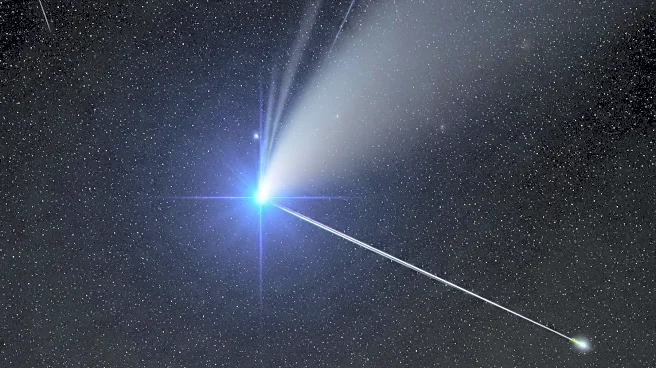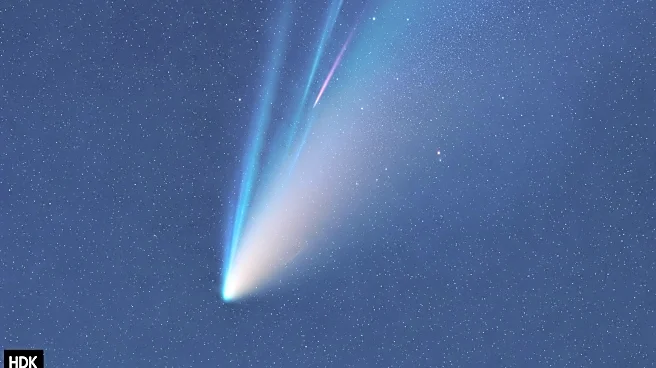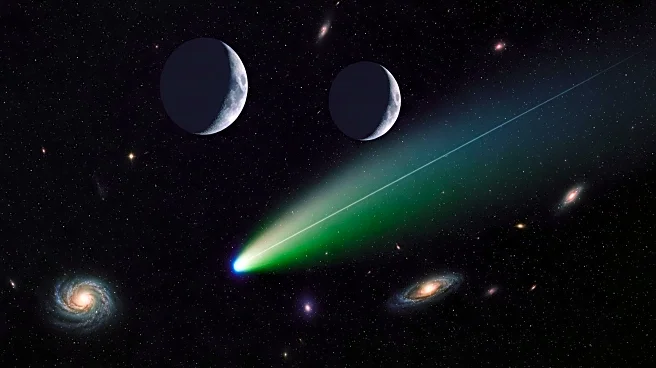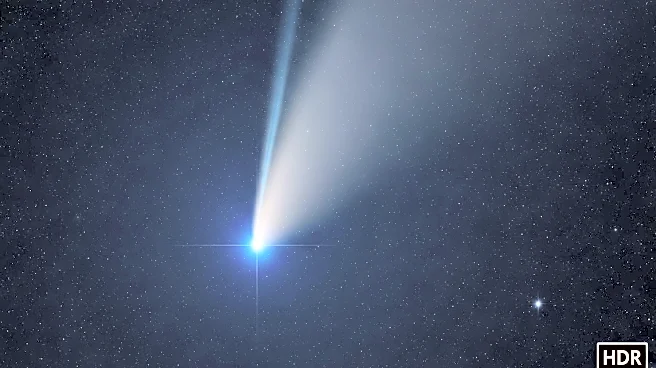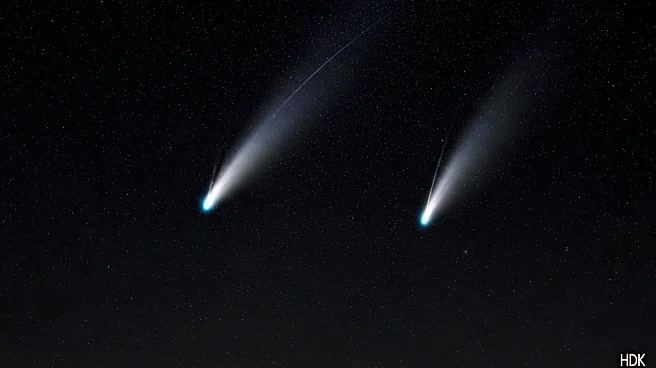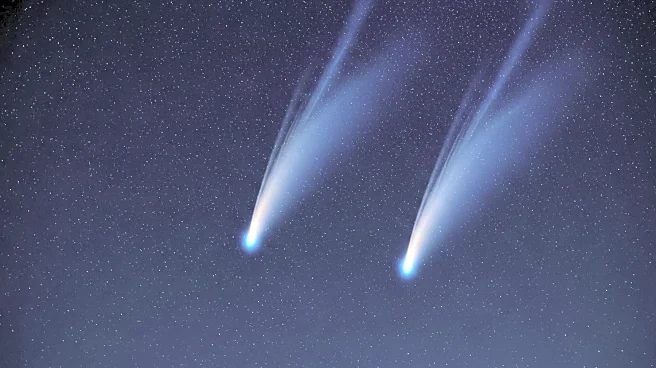What's Happening?
Comet C/2025 A6 (Lemmon) is brightening as it approaches Earth, potentially becoming visible to the naked eye in October. Discovered on January 3, 2025, at the Mt. Lemmon Observatory in Arizona, the comet is currently heading deeper into the solar system. It will make its closest approach to Earth on October 21, passing approximately 89 million kilometers from the planet. Since its discovery, the comet has increased in brightness, raising hopes that it could be visible from dark sky locations. Astrophotographers have captured stunning images of the comet, showcasing its bright nucleus and ion tails.
Why It's Important?
The brightening of Comet C/2025 A6 (Lemmon) offers a unique opportunity for both amateur and professional astronomers to observe and study a comet as it approaches Earth. The comet's visibility could inspire public interest in astronomy and provide valuable data for scientists studying cometary behavior and composition. Observing the comet's interaction with solar radiation and its resulting tail formation can enhance our understanding of these icy bodies and their role in the solar system.
What's Next?
As Comet C/2025 A6 (Lemmon) continues its journey, it will reach perihelion, its closest point to the Sun, on November 8. During this time, astronomers will continue to monitor the comet's brightness and tail development, providing further insights into its composition and behavior. The comet's visibility in the night sky could offer a spectacular sight for skywatchers and contribute to ongoing research into the nature of comets.

